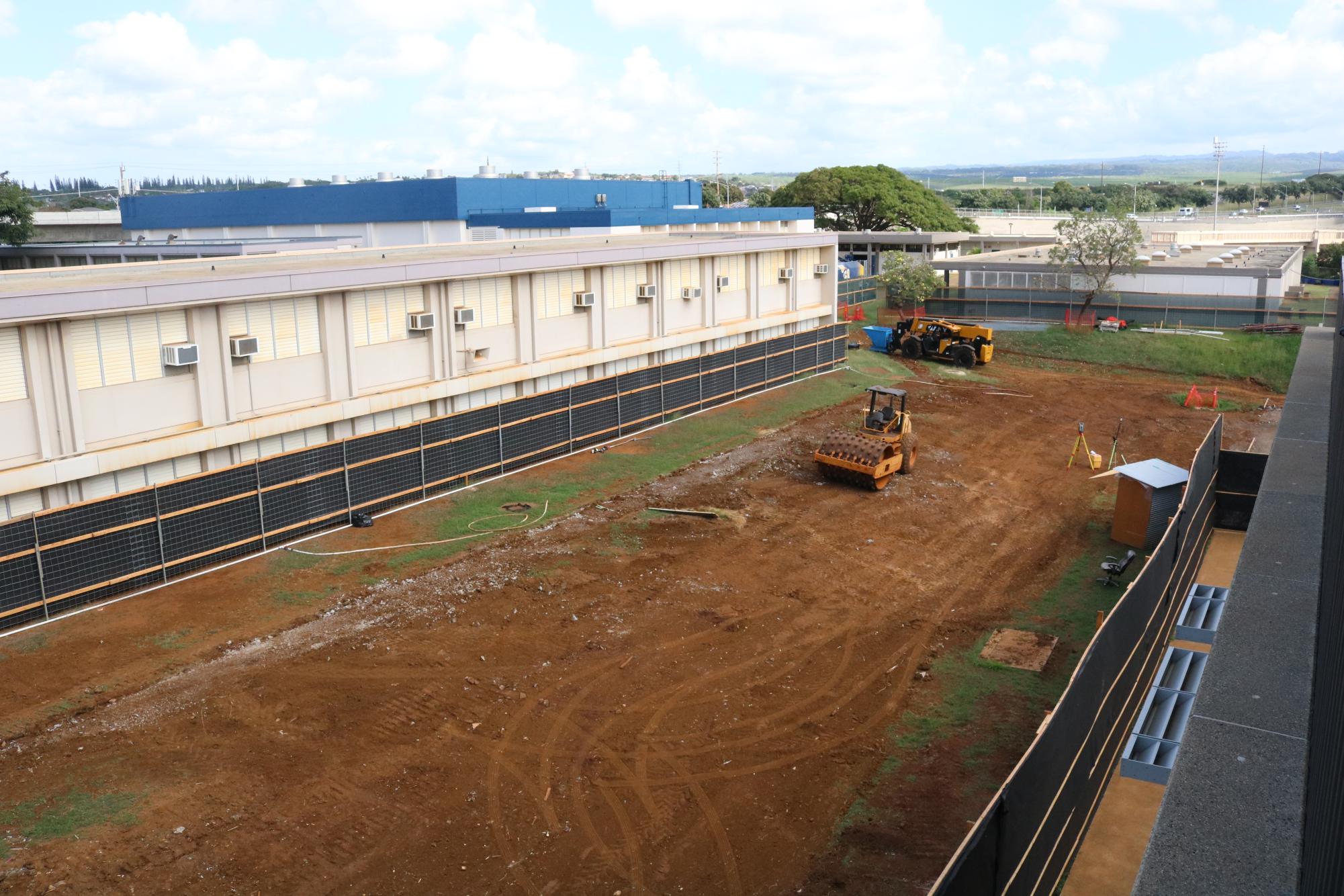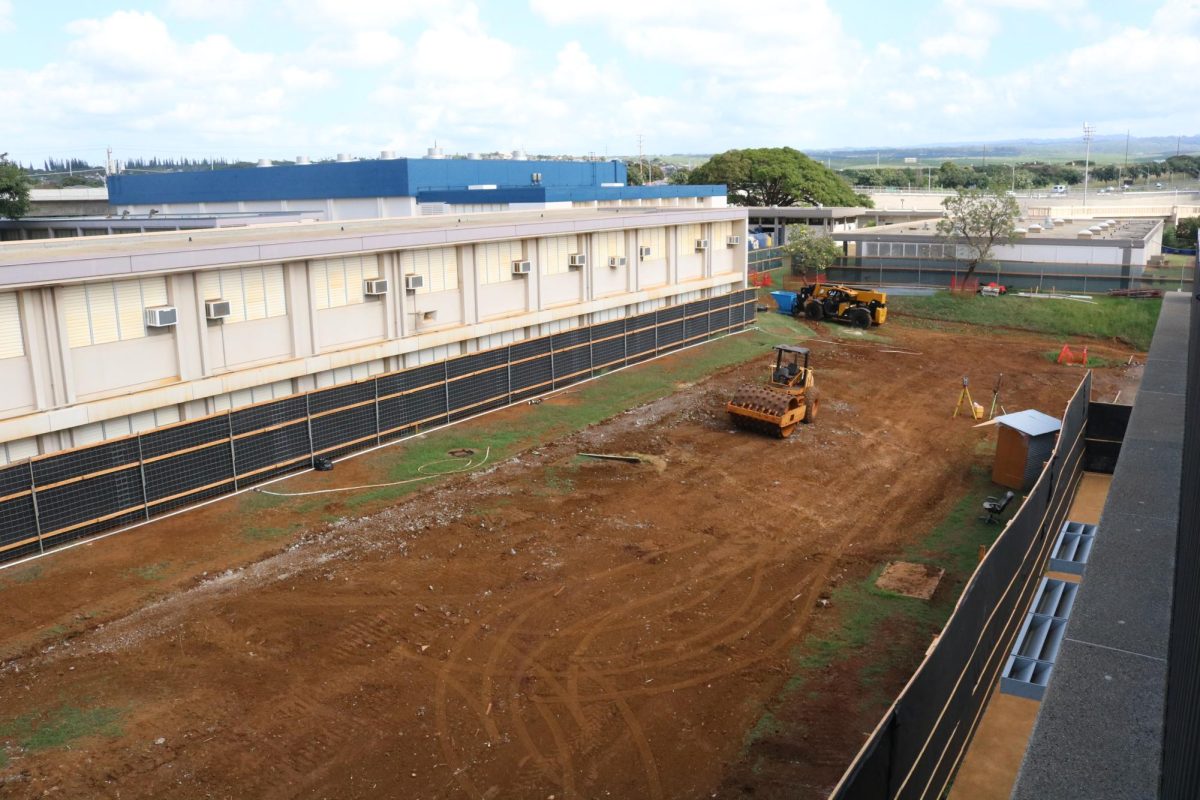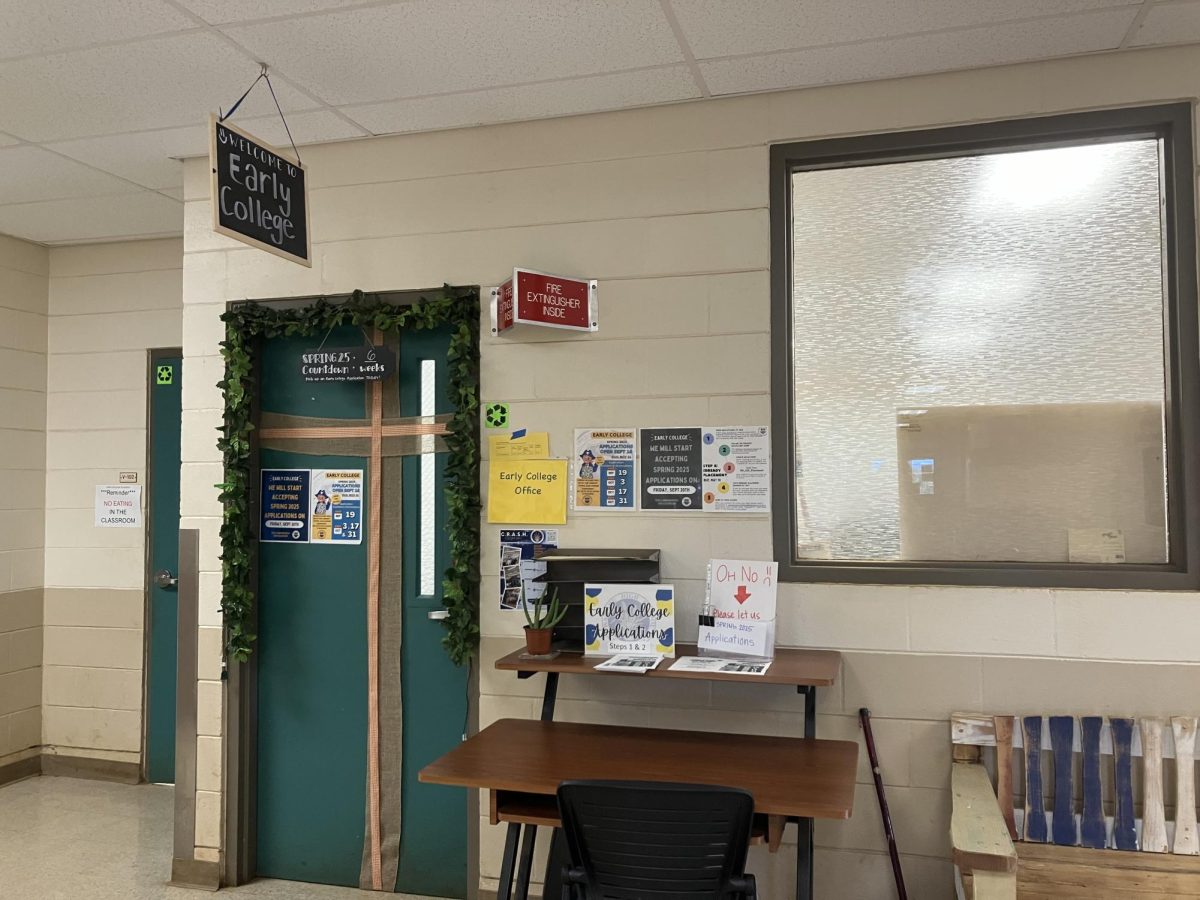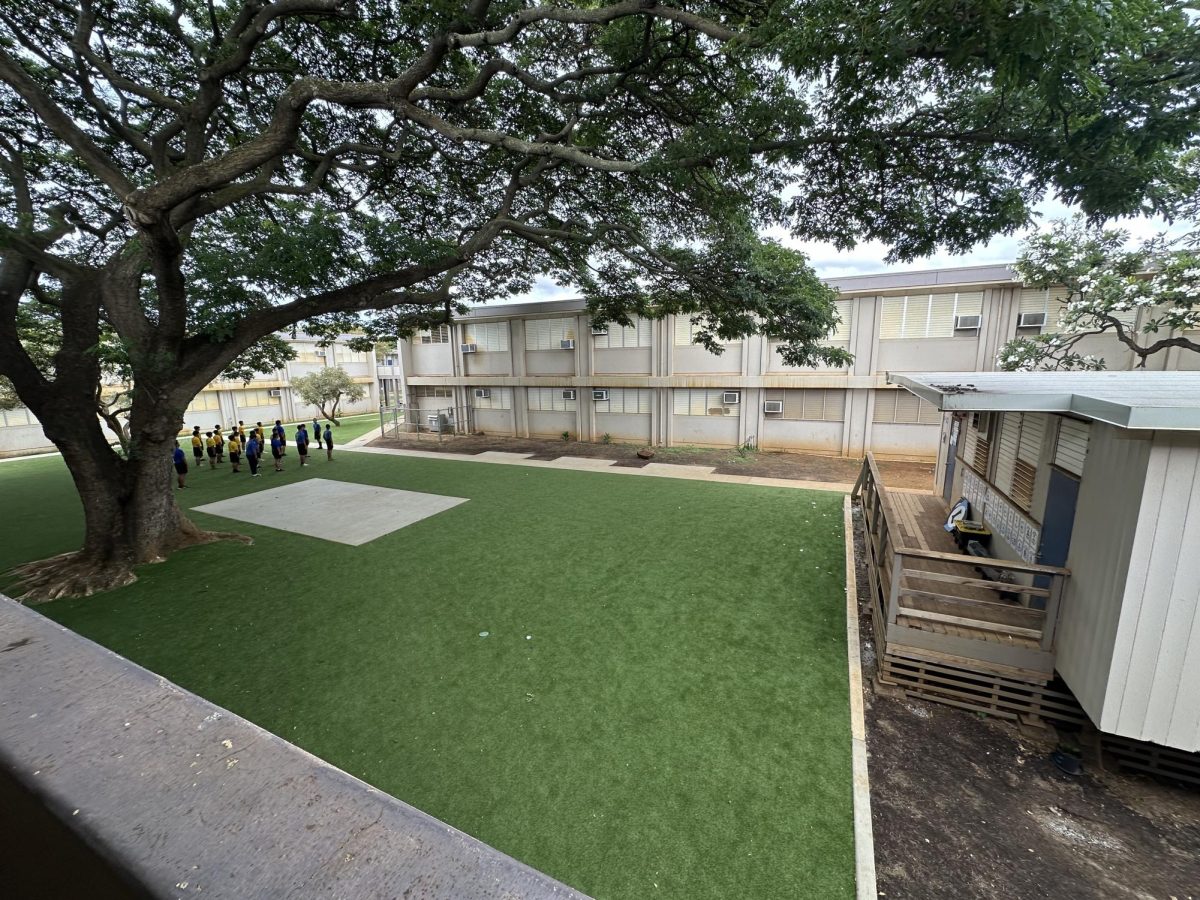In the past few years, Waipahu High School has welcomed new additions to its campus with an Integrated Academy Learning Center (W-building) and Academic Health Center.
Smaller upgrades that made just as big of an impact, such as turf installments, shaded seating, a renovated Q-building quad, and repainting of the library and gym, have pushed Principal Zachary Sheets’s vision for the campus’s beautification.
This year, Sheets’ initiative is getting another new addition, in the form of a new building and stage area, that resulted in the demolition of four portable classrooms: P20, P21, P22, and P23. February 7 was the last full operation of these classrooms. The following week, on February 11, marked the start of demolition.
When asked about the purpose of the demolition, Sheets stated that it would make way for a new walkway and stage area, similar to the existing stage located in I-Quad. He then went on to talk about the construction of the new building. This building’s preparation began the days following the demolition.
“It’s going to have 11 classrooms and it’ll be three stories. It will go right up against the existing [W] building. So, where the current stairwells are on the backside, you’ll be able to walk up the stairwells, and it will connect across each hallway to the new ‘phase 2’ building.”
Sheets added that giving a layout on how the new building will add to the existing Integrated Academy Learning Center.
The new building is projected to be completed in August of 2026.
The building will not be for any specific classes like the Integrated Academy Learning Center, Sheets said, but will include a specialized classroom at the bottom that is bigger to contain showers and restrooms that will benefit the students in Waipahu High School’s Ohana of Excellence Academy.
However, as the next phase of preparation and construction begin, teachers and students have been greatly affected by the loss of the portables. Since the demolition of the portable classrooms, four teachers have been subjected to moving in between classrooms in the middle of the school year, affecting their teaching and their students.
Two teachers who have lost their classrooms in the recent demolition have contrasting views.
Academy of Natural Resources 9th grade World History and 12th grade Geography/Anthropology teacher Christopher Huynh is one of the teachers that are frustrated and saddened by the demolition of his portable classroom.
“It was quite unnecessary especially since we have a lack of classrooms as is. I know a new building is coming up but taking down 4 rooms in the middle of a quarter, middle of a school year, was quite mind baffling,” stated Huynh.
On the other hand, ANR World History and U.S History teacher Brooke Kanaeholo, although frustrated about the timing of the demolition, remains neutral about the removal of her portable classroom. She stated a challenge WHS has is that many teachers have to float between classrooms due to not having enough.
“With this demolition, we are adding four more teachers to the problem. However, I do know the process in which the school has to work with this construction company with approvals and timelines, and for that, I’m a bit lenient about the choice to demolish,” Kanaeholo said, referring to her views on the demolition.
Kanaeholo went on to say that the demolition of her portable classroom affects her ability to teach with each classroom being different, making it a constant adjustment.
“Every classroom is different, so it’s hard adjusting your class to a new classroom, especially with new seating arrangements… It’s hard teaching in non-social studies classrooms where I can’t just point to a map on the wall when I need to reference a country,” said Kanaeholo.
Due to the timing of the demolition, in the middle of the school year, Kanaeholo also recognizes the adjustment that her students have needed to go through. However, she greatly appreciated their helpfulness with moving classroom belongings into her new homebase, which made adjusting a little more manageable.
Sheets also acknowledged the challenge related to the number of teachers moving between classrooms due to the lack of a permanent classroom, highlighting that the teachers have been flexible and understanding given the circumstances of their former classrooms and that the admin did everything they could to help with the adjustment.
He also touched on next school year’s schedule, which now has to account for the loss of those portables, looking to make sure the schedule is cohesive for the impacted teachers.
“The schedule will be made knowing those teachers will float. So, hopefully it’ll be easier to put them in a room where it’s closer, for example, or they don’t have to go to four classes and only two” stated Sheets.
As of now, Huynh has a small space to teach his classes and Kanaeholo moves between five classrooms for the six classes she needs to teach, but their situation next school year is ultimately unknown.
Both teachers are expected to be without a permanent classroom until around August of 2026, when the construction of the new building is complete. Though, it is not confirmed whether or not the classrooms in the new building will replace the four lost.
Aside from the new building and demolition, Sheets has other plans to further make the campus a more cohesive and improved environment, such as: fixing and cleaning up old ANR student greenhouses, transforming the courtyard area in front of A-Building to add more benches for the school’s Cane Cafe services, and incorporate more student art into the campus with murals and student-made clay tiles.








